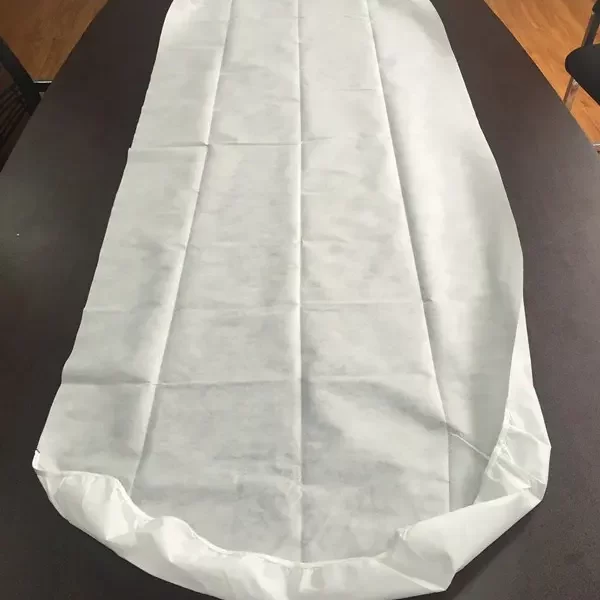Table of Contents
When one thinks of healthcare, thoughts typically center around professionals in white coats, state-of-the-art medical equipment, and advanced pharmaceuticals. However, equally crucial, yet often overlooked, is the role of hygiene. In a healthcare setting, where the risk of infection transmission can have severe consequences, maintaining impeccable standards of cleanliness is a cardinal requirement. One critical aspect of this hygiene protocol involves bedding – an aspect undergoing a transformative change with the emergence of disposable bed covers.
Today, we delve deep into the world of disposable bed covers. We will understand their role, advantages, the benefits they bring to healthcare facilities, and why they are increasingly seen as the future of hygiene in healthcare settings.
Hygiene: The Cornerstone of Healthcare
In any healthcare setting, the goal is to restore health and promote wellbeing. This mission necessitates creating an environment that is as sterile and contamination-free as possible. Bedding, which comes into direct and prolonged contact with patients, therefore, plays a vital role in this context.
Traditional bedding solutions, including reusable bed covers, have been a common feature in healthcare settings for many years. However, they pose a significant challenge – maintaining absolute hygiene. Even with thorough washing and sterilizing processes, there’s always a risk of residual microbes, which can lead to cross-contamination, especially in high patient turnover scenarios.
Enter disposable bed covers. Designed for single use, these covers have ushered in a new era of cleanliness and hygiene in healthcare facilities, offering a fresh, sterile surface for each patient and effectively minimizing the risk of cross-contamination.
The Disposable Advantage: Redefining Hygiene Standards
Disposable bed covers, by virtue of their design, bring significant benefits to the table. Their single-use nature ensures that every new patient has a clean, untouched surface, thereby reducing the risk of infection transmission.
This advantage becomes crucially important in certain healthcare settings where patients may have compromised immune systems or heightened vulnerability to infections. Consider environments such as intensive care units, neonatal units, or post-operative recovery wards. In these scenarios, disposable bed covers provide an additional layer of protection, reducing the potential of hospital-acquired infections and contributing to better patient outcomes.
Another key feature of many disposable bed covers is their water-resistance. This quality provides an additional barrier against contamination, particularly useful in situations where fluid spillages are common, such as during wound dressing changes or other patient care procedures.
Efficiency and Cost Implications: The Bigger Picture
Disposable bed covers offer more than just hygiene benefits. They bring substantial advantages in terms of operational efficiency and cost-effectiveness. Traditional bed covers, while initially cheaper, require regular laundering. This process is not just time and resource-intensive, but it also adds to the overall operational costs of a healthcare facility.
By switching to disposable bed covers, healthcare facilities can eliminate these associated costs. This change allows for reallocation of staff time and resources towards direct patient care, thereby improving efficiency.
On the surface, disposable bed covers may seem more expensive due to their single-use nature. However, when one considers the bigger picture, taking into account the costs saved on laundry, the reduced need for storage space, and the potential decrease in hospital-acquired infection rates, disposable bed covers present a cost-effective solution in the long run.
Eco-Consciousness: The Sustainable Shift
Historically, one of the key criticisms against disposable products has been their environmental impact. But like many sectors, the disposable bed cover industry has also experienced a shift towards sustainability. Advancements in material sciences and production methods have led to the creation of disposable bed covers made from biodegradable materials.
These eco-friendly alternatives break down over time, thereby reducing their environmental footprint. Moreover, by eliminating the need for regular laundering, disposable bed covers also contribute to saving water and energy, underlining their eco-friendly credentials.
Towards a Hygienic Future: The Role of Disposable Bed Covers
As the global healthcare industry continues to evolve and adapt, it becomes increasingly clear that disposable bed covers hold a significant role in its future. In an environment where hygiene is non-negotiable, and the cost-effectiveness and efficiency of operations are paramount, disposable bed covers emerge as a comprehensive solution.
By integrating disposable bed covers into daily operations, healthcare facilities can assure patients of a clean, safe, and comfortable environment. But the implications go beyond immediate patient care. The use of disposable bed covers also demonstrates a healthcare provider’s commitment to evolving industry best practices, patient safety, and eco-conscious decision-making.
In conclusion, disposable bed covers represent a significant stride towards a future where hygiene and healthcare go hand-in-hand. They stand as a testament to the healthcare industry’s continuous strive for better patient outcomes. As we move towards this future, it becomes increasingly evident that disposable bed covers are not just a product, but a symbol of an industry-wide commitment to safety, care, and sustainability. By choosing disposable bed covers, healthcare facilities are taking a significant step towards enhancing patient care and shaping a future of hygiene excellence.
Please visit our website for more product details https://medposnonwoven.com/product/disposable-non-woven-bed-covers/

